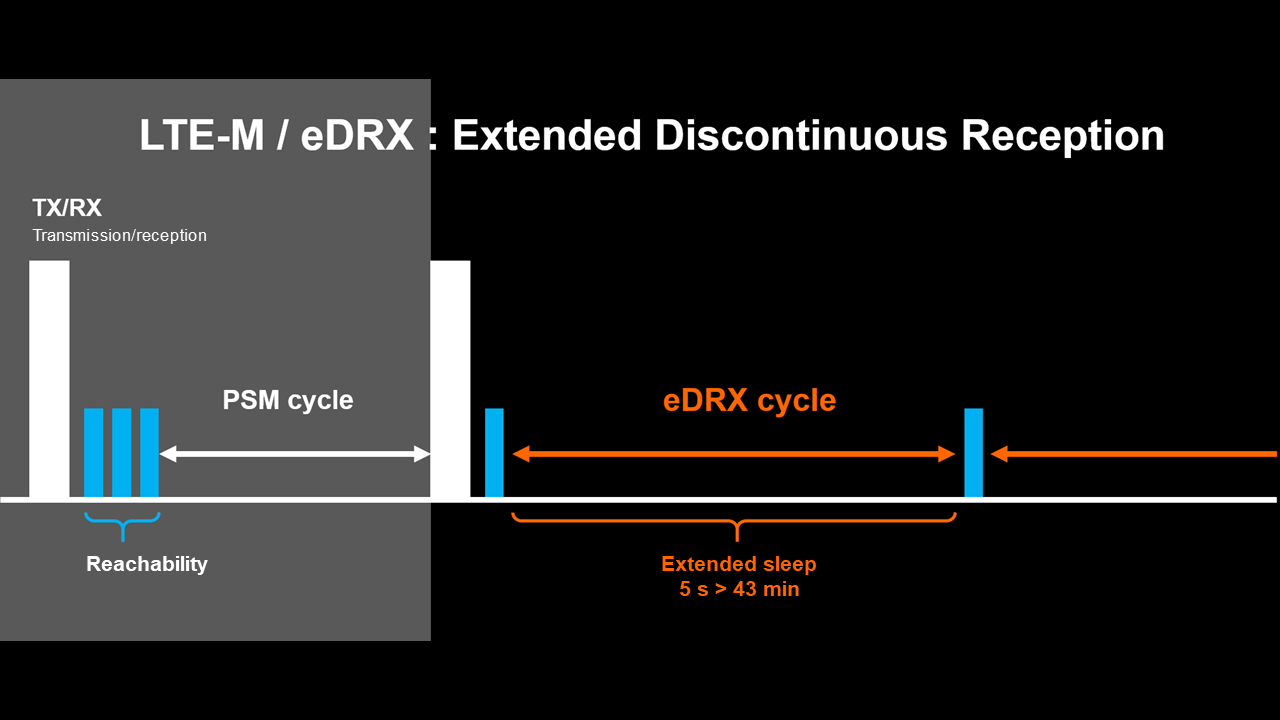What is eDRX?
Since 2020, eDRX (Extended Discontinuous Reception) has significantly enhanced the LTE-M protocol. With eDRX, the connected device can further reduce its energy consumption. It can be used on its own or in addition to PSM for any IoT device. So PSM and eDRX can be combined to optimise every IoT solution.
LTE-M is an offshoot of LTE - otherwise known as 4G - that was specially designed for the IoT. Launched in 2018 in France, it makes use of LTE network deployment. LTE-M is an LPWAN cellular network, so a wireless communication technology, which unites almost all the benefits of current communication technologies to serve the IoT:
- LPWAN technology - long distance and low consumption - and
- cellular technologies - reliable and secure.
In terms of latency and speed, the LTE-M network is already much better than NB-IoT for instance, with low latency.
How does sleep work?
|
For your IoT applications, eDRX mode can extend the life of the device and IoT system while also optimising the associated communication - between objects and platforms - via the cell network. More specifically, eDRX defines the sleep time for the connected object as a period of 5 seconds to 43 minutes, as shown in the diagram. |
 |
In this sleep period the device can neither send nor receive data. So, the object tells the network when it wants to go to sleep. The period of sleep is defined according to your applications that need close management of energy consumed.
In practical terms, to manage your fleet of connected objects, an LTE-M subscription comes as an option offered via normal LTE.